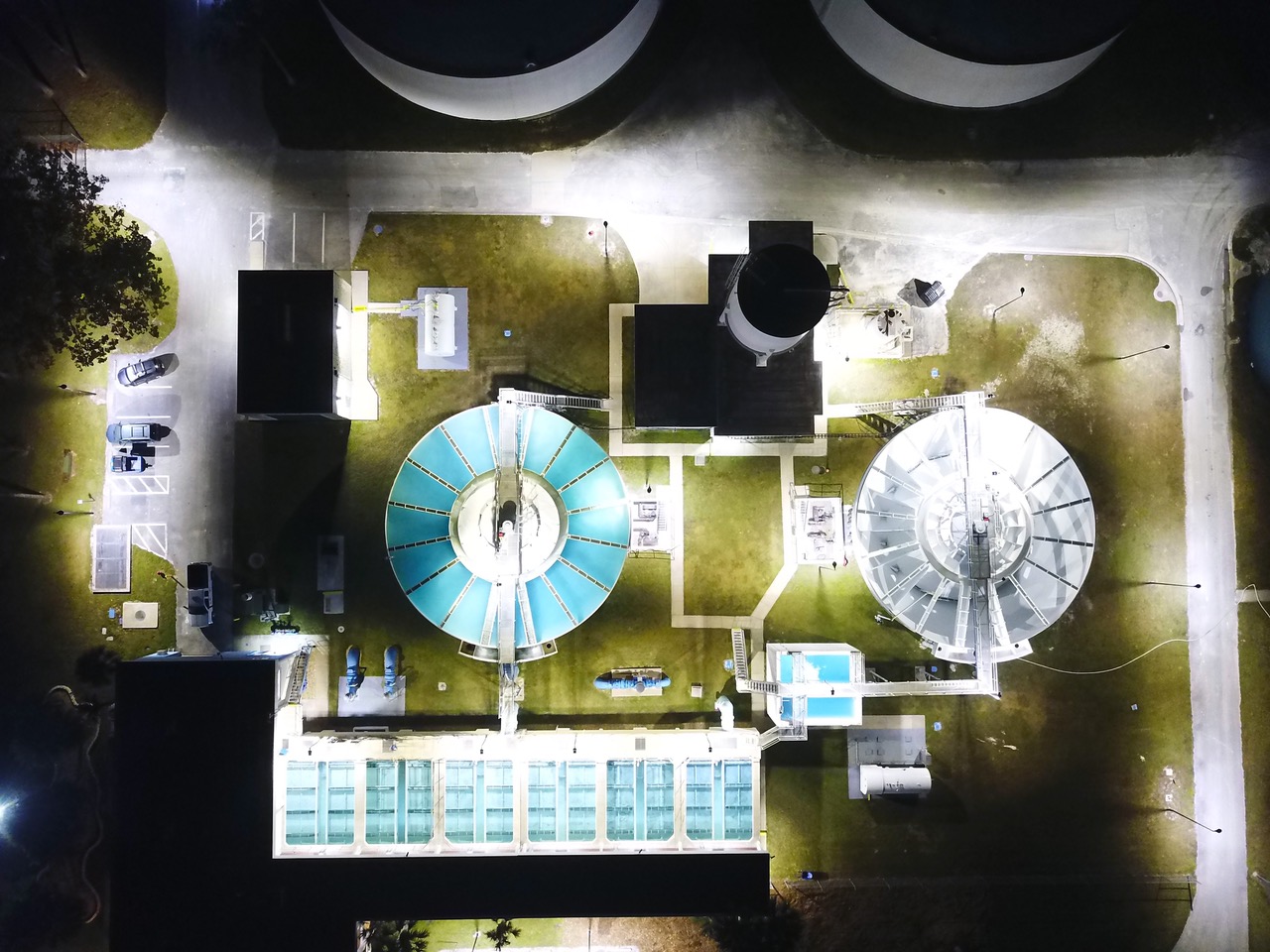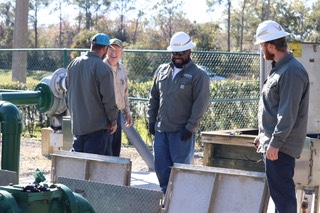Ocalans are lucky to live in the midst of springs country. So says Robyn Preston – and he should know. It’s Preston’s job to take our famed North Florida groundwater as soon as it is pumped from the Floridan aquifer and make sure it is softened, disinfected and filtered while being tested each step of the way to faucets in homes and businesses around the city of Ocala.
“We’re fortunate we live in the springs area,” said Preston, who is water treatment and reclamation manager for Ocala’s municipal water system. “We have some of the best water in the world.”
The city of Ocala pumps between 12 and 13 million gallons of that groundwater each day from five wells in the northeast and southwest parts of the city. The water comes from the same place as the water coming out of Silver Springs — something Preston emphasizes.
OM sat down with Sean Lanier, the city director of engineering and water resources, and his management team to discuss the state of the city’s water system in light of the crisis in Jackson, Mississippi, in which massive flooding caused the water system to fail and become inundated with muddy and contaminated stormwater.

Lanier said the Jackson disaster was a result of aging infrastructure. Too many of that city’s water lines were deteriorating and leaking. So, when its water system pumps ceased working during a massive rain event, the dirty floodwaters infiltrated the water lines and black, muddy water was flowing from Jackson faucets.
“The main thing is they lost pressure (in their water lines),” he said. “They had too many leaks in their lines.”
Lanier explained that maintaining adequate pressure is vital to a good water system. Because every system is made up of miles and miles of pipes — there are 548 miles of water lines running throughout the city of Ocala — every one has leaks, except for the newest in the system. By maintaining adequate pressure in the lines, it keeps contaminated stormwater and groundwater from seeping into the system.
“The main thing is they lost pressure,” Lanier said. “Our system is pretty sound.”
So, what is the overall state of Ocala’s municipal water system, by far the largest in Marion County?
“Our water system is in pretty good shape,” Lanier said. “I’d give it a ranking of fair to good.”
He explained that any water system will always have pipes that need replacing. And while the city has a long-term master plan to continually replace pipes, which have a life expectancy of 50-100 years, there remain a few parts of the city that bear watching, mostly in the older portions of Ocala like the Historic District.
Despite some areas of the city still needing upgraded pipes, Stacey Ferrante, manager of water resources maintenance engineering and water resources, said the city water system “is in good shape,” largely because the system is constantly being updated and utilizes state-of-the-art technology.
The key to ensuring a steady flow of clean water, Lanier and Ferrante said, is maintaining pressure of at least 70 pounds per square inch. Most of the city’s lines have more than 90 psi.
As Ocala has grown, so has its water system. Water Treatment Plant No. 1., located in the northeast part of the city off 36th Avenue, was built in 1972. It was doubled in size in 1989.
The city is currently adding a second water plant off South Pine Avenue, south of the city. The $52 million project is being built over 10 years as a partnership with the St. Johns Water Management District and the Florida Department of Environmental Protection. It is expected to be fully operational by 2030.
The reason for the partnership is Ocala is breaking new ground, so to speak, on the future of supplying water to Floridians. Currently, water taken for public water systems comes from the Upper Floridan aquifer. The new plant goes deeper – 1,350 feet vs. 265 feet for the city’s existing wells — extracting water from the Lower Floridan aquifer, something that has raised questions among some environmentalists but has been greenlighted by the state in its quest to find more water for a rapidly growing population.
There is a difference in the contents of the two water supplies, and Lanier said to make the lower aquifer taste, smell and have the same chemical makeup as the current upper aquifer water, the city will be creating an 80-20 mix of the two water sources so lower aquifer water “has a healthy mineral content.”
Managing the mineral content of the aquifer water is a big part of Preston’s job. Behind the city’s Water Resources Department headquarters is a massive pile of white powder. It is calcium that has been extracted from the groundwater so that the water coming from taps is not yellowish and odorous because of the high lime content of our groundwater.
Moreover, removing excessive amounts of calcium and magnesium from the groundwater in preparation for sending to homes and businesses also is a precautionary step to keep “lime scale” from building up in not only city water lines but customers’ water lines as well. Lime scale can accumulate to the point it blocks the flow within the water lines.
The mineral content is constantly monitored to ensure proper levels of calcium, magnesium and other minerals, with water plant operators checking it every two hours, 24/7, Preston said.
The results? “It’s safe and good for you,” Preston said. 
In addition to removing some of the excessive mineral content, the city also chlorinates and fluoridates its water. The former is done to minimize odors and to remove, as Preston put it, “99.9 percent removal of pathogens and viruses” that may be in the water.
Having water that is safe and healthy is one thing, but taste is something altogether different. And for those who drink Ocala’s water, it offers award-winning taste.
As Lanier boasted, the city has won the American Water Works Association Region XI Best Tasting Water Contest, conducted between Florida’s water systems, for three straight years. That, Preston said, is a result of constant monitoring and updating of the city’s water plant infrastructure.
As for the future, Lanier said Ocala not only has the infrastructure in place or in the planning stages to accommodate it, but it also has the capacity. Currently, the city pumps 12 to 13 million gallons of water a day to its customers. Lanier said the existing water plant has the capacity to pump up to 24 mgd, although the state only permits it to pump 15 mgd.
And if the existing wells were to fail for whatever reason, the city has an emergency well that can pump 5 mgd, Lanier said.
Lanier said what ensures the safety and continued efficiency of Ocala’s water system is redundancy – that is, the city has back-up systems and sources should anything go wrong. The new water plant will only add to that redundancy, he said.
“We have a large capacity,” he said. “There’ll be an opportunity for us to become more of a regional utility.”
He said the city and the county, which has its own smaller water utility, already have a number of “interconnects” to ensure both can continue to provide their customers with water if a Jackson-like disaster were to occur.






